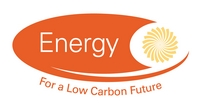Projects
Projects: Custom Search |
||
| Reference Number | EP/Y034457/1 | |
| Title | A High Precision Laser-based Mobile SEnsor for Detection of Trace Amounts of Hydrogen | |
| Status | Started | |
| Energy Categories | Hydrogen and Fuel Cells (Hydrogen, Other infrastructure and systems R&D) 100%; | |
| Research Types | Basic and strategic applied research 100% | |
| Science and Technology Fields | PHYSICAL SCIENCES AND MATHEMATICS (Chemistry) 20%; ENGINEERING AND TECHNOLOGY (Electrical and Electronic Engineering) 80%; |
|
| UKERC Cross Cutting Characterisation | Not Cross-cutting 100% | |
| Principal Investigator |
Professor E Rebrov School of Engineering University of Warwick |
|
| Award Type | Standard | |
| Funding Source | EPSRC | |
| Start Date | 01 January 2024 | |
| End Date | 30 June 2025 | |
| Duration | 18 months | |
| Total Grant Value | £127,041 | |
| Industrial Sectors | ||
| Region | West Midlands | |
| Programme | Frontier Grants Proof of Concept | |
| Investigators | Principal Investigator | Professor E Rebrov , School of Engineering, University of Warwick (100.000%) |
| Web Site | ||
| Objectives | ||
| Abstract | Hydrogen is a leading zero-emission fuel and hence applications are bound to increase. For example, industries such as the natural gas, steel and automotive are slowly adopting green hydrogen technologies. This shift away from the fossil-based energy sources creates a distinctive market space for hydrogen sensors that are rapid, mobile and sensitive. Thus, the aim of the project is to develop a trace gas sensor for H2 based on a fast and sensitive optical measurement technique - tunable diode laser absorption spectroscopy (TDLAS). Laser based gas sensors will have improved speed, sensitivity and selectivity compared to conventional sensor paradigms. An initial detection limit of 0.02 vol% has been targeted which is consistent with the state of the art. A consortium of optical gas sensing experts assisted by stakeholders such as the UK Network-H2 initiative, give the project its uniqueness. A key component of the gas sensor will be developed in coillaboration with Eblana Photonics Ltd (Dublin), based on their discrete mode platform which is a low-cost, scalable technology. A novel-lightweight multipass gas cell will be developed in collaboration with IRsweep (Switzerland). Being the lightest gas molecule, H2 poses several challenges in sampling and, hence, a dual modal approach using an additional optical gas imaging (OGI) technique is proposed to identify optimal sampling conditions. An aerial measurement campaign will be conducted at a hydrogen gas facility and further development and commercialisation will be undertaken with our industrial partners | |
| Data | No related datasets |
|
| Projects | No related projects |
|
| Publications | No related publications |
|
| Added to Database | 08/11/23 | |



